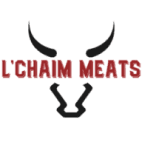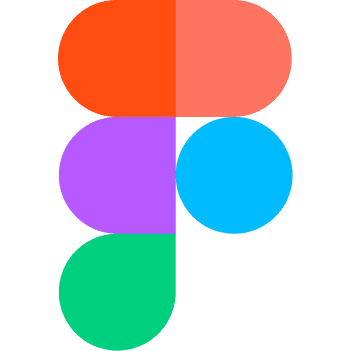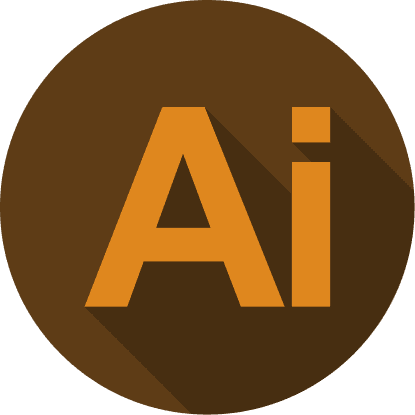This website stores cookies on your computer. These cookies are used to improve your website experience and provide more personalized services to you, both on this website and through other media. To find out more about the cookies we use, see our privacy policy.
Bring In A Dynamic
UI/UX Designer Within 24 Hours
Our experts craft visually appealing, user-centric designs that elevate engagement, boost conversions, and strengthen brand identity.
Clients rate Webevis UI/UX Designer 4.9 / 5.0 on average based on 4,330 reviews.
3 Steps To Seamlessly Find Your UI/UX Designer With Webevis
Define
Specify your project requirements, goals, and vision. Our team will tailor the perfect UI/UX designer solution for your needs.
Recruit
Engage with our pool of talented UI/UX designers. We'll help you select the ideal candidate who matches your project's demands.
Succeed
With the right designer onboard, achieve your project objectives, enhance user experiences, and elevate your digital presence.
Our UI/UX Designer Pool
- User-Centric Design Expertise At Your Disposal
- Innovative Problem Solvers Dedicated To Your Digital Success
- Proven Track Record Of Success In Diverse Industry Verticals
- Seamlessly Adapt To Various Devices And Platforms
- Elevate Brand Identity Through Visually Stunning Interfaces
- Improve User Flow For Higher Conversion Rates
Our UI/UX Designing Services
We offer a comprehensive range of UI/UX design services to enhance user experiences and elevate your digital presence.
User Research
Wireframing and Prototyping
Visual Design
Usability Testing
Responsive Design
Accessibility Design
Iterative Improvement
Why Should You Hire Our UI/UX Designers?
Our UI/UX designers blend art and science to create exceptional user experiences, driving engagement, conversions, and brand loyalty.
Expertise
Our designers are seasoned experts, well-versed in the latest design trends, and dedicated to delivering excellence.
User-Centric
Prioritizing users, we craft interfaces that resonate, ensuring satisfaction and loyalty for your brand.
Cross-Platform
Seamlessly adapt designs across devices, platforms, and screen sizes for a consistent user experience.
Conversion Focus
Enhance user flows and interactions to boost conversions and achieve your business objectives effectively.
Brand Enhancement
Elevate your brand's identity and recognition with visually stunning and cohesive design solutions.
Timely Delivery
We understand deadlines; our designers are committed to delivering projects promptly and within budget.
Tools and Platforms
Were generated in sales by our marketers for our customers in 2021 What your Webevis experts use to help you grow

Swift Hiring Success
Our process simplifies talent selection, making expertise accessible and avoiding complexities. Your design solutions are simplified and delivered.




Eager To Create Memorable User Journeys To Boost Conversions?
Our team creates intuitive, responsive, and accessible digital experiences, enhancing user satisfaction and your competitive edge.
Everything About Hiring UI/UX Designers
UI/UX design is the transformative bridge between ideas and exceptional digital experiences. This guide unravels the complexities of hiring UI/UX designers to find the perfect fit for your project.
What Is The Role Of A UI/UX Designer?
A UI/UX designer embodies a unique fusion of a User Interface (UI) designer and a User Experience (UX) designer. UI designers concentrate on the visual layout, behavior, and aesthetics of digital products, amalgamating information architecture, interaction design, and visual design into one cohesive role. They craft the actual screens and pages users interact with, ensuring the visual cues align with UX design intentions.
UX designers, conversely, focus on delivering exceptional user experiences grounded in research and user-centric methodologies. They synthesize user insights into sitemaps, wireframes, and prototypes, refining the product's functionality. In essence, they shape the overall user journey, prioritizing user needs, business goals, and technical constraints. Collaboration between these roles creates products that seamlessly blend form and function, resulting in memorable and effective digital experiences.
Why Is It Essential To Hire A UI/UX Designer?
Hiring a UI/UX designer is crucial because they play a pivotal role in shaping the user experience. In a competitive landscape, user attention is fleeting, and great code alone is not enough to captivate users. A skilled designer understands the psychology of user interaction, creating interfaces that are not only aesthetically pleasing but also purposeful and emotionally engaging. They ensure that users can achieve their goals easily and enjoyably, whether it is solving a problem or being entertained. UI and UX design enhance user satisfaction, boost conversions, and drive revenue. Neglecting these aspects can lead to user frustration and product failure.
What Skills To Look For In A UI/UX Designer?
When seeking a UI/UX designer, it is essential to consider a comprehensive skill set. UI/UX design entails more than visual aesthetics; it involves understanding human behavior, effective communication, and technical proficiency.
The following are the key hard skills to prioritize:
1.
Interface Design
Crafting visually appealing and user-friendly interfaces.
2.
Layouts and Grids
Structuring content for readability and navigation.
3.
Typography
Enhancing user focus through effective text presentation.
4.
Wireframing and Prototyping
Creating clear visual representations of product designs.
5.
Interaction Design
Designing intuitive user interactions.
6.
Knowledge of Design Tools
Proficiency in essential design software like Figma, Sketch, or Balsamiq.
These skills collectively ensure that a PPC expert can effectively manage and optimize your digital marketing campaigns.
8.
Communication
Ensuring clear collaboration with the development team and stakeholders.
9.
Empathy
Understanding user needs and motivations.
10.
Curiosity
A drive to explore innovative design solutions.
11.
Analytical Thinking
Evaluating data and user feedback to refine designs.
A successful UI/UX designer possesses both hard and soft skills to deliver exceptional user-centered designs.
How To Write An Effective UI/UX Designer Job Description?
To create an effective UI/UX designer job description:
1.
Clarity and Precision
Begin with a precise job title that reflects the role's nature.
2.
Company Introduction
Introduce your company and its values to engage potential candidates.
3.
Responsibilities
Outline key responsibilities, including user research, wireframing, prototyping, and cross-functional collaboration.
4.
Requirements
Clearly define qualifications, specifying experience levels and proficiency in design tools and languages.
5.
Portfolio Emphasis
Encourage candidates to showcase their expertise through a portfolio.
6.
Desired Skills
Highlight any additional skills or remote work experience to attract diverse talent.
7.
Culture and Communication
Convey your company's culture and the importance of effective communication for a successful hiring process.
Interview Questions For UI/UX Designers
The following set of insightful interview questions will help you assess the expertise, skills, and creative insights of UI/UX designers.
1.
What tools do you use for UI/UX design, and how do they enhance your design workflow?
I utilize a range of design tools, including Sketch, Figma, Adobe XD, and InVision. These tools are integral to my design process as they facilitate the creation of wireframes, prototypes, and high-fidelity designs. They also enable efficient collaboration with team members and stakeholders. For instance, Figma's real-time collaboration features have proven invaluable in streamlining communication and feedback collection. By leveraging these tools, I ensure that the design aligns with user needs and project goals while maintaining a seamless workflow.
2.
Can you explain the significance of wireframes in the UI/UX design process?
Wireframes serve as the architectural blueprints of a digital product. They provide a low-fidelity representation of the layout and structure, enabling a visual understanding of content and functionality placement. Wireframes are vital in the early stages of design as they help convey ideas to stakeholders and team members, aligning expectations and reducing misunderstandings. They are a foundation upon which designers build high-fidelity designs and prototypes, guiding the overall user experience. Wireframes are a key tool for user-centered design, ensuring that the final product is intuitive, user-friendly, and aligned with project objectives.
3.
Define what a prototype is and explain its role in the design process.
A prototype is a preliminary version of a product designed to test and refine its layout, functionality, and user experience. Prototypes can vary in fidelity, ranging from low-fidelity sketches to high-fidelity interactive models. Their primary role is to gather feedback from users and stakeholders and validate design decisions. Prototypes serve as a bridge between conceptualizing ideas and implementing them, allowing for early testing and iteration. They help uncover usability issues, validate design assumptions, and ensure that the final product aligns with user needs. Prototyping accelerates the design process by identifying and addressing problems before development, ultimately leading to a more user-centric and effective end product.
4.
What is the purpose of a user persona, and how do you use it in the design process?
User personas are fictional representations of user groups grounded in research and data. They encompass demographic information, behaviors, needs, and goals. User personas serve as a guiding compass throughout the design process, ensuring that the product aligns with the user's perspective. Designers use personas to empathize with users, tailoring the product to their unique requirements. By referring to user personas, designers make informed design decisions that prioritize user satisfaction and engagement. This user-centric approach ensures that the design resonates with the intended audience, resulting in a more successful product.
5.
Could you explain the typical stages of the UI/UX design process and the significance of each stage?
The UI/UX design process typically comprises several stages, each with its unique significance. It starts with research, where understanding user needs and defining problems is crucial. Ideation follows, fostering creativity and generating design concepts. Prototyping allows designers to test and refine these concepts, ensuring alignment with user expectations. User testing collects valuable feedback, validating design decisions and identifying areas for improvement. The final stage, refinement, incorporates user feedback and iterates on the design, ultimately leading to a user-centric and efficient product. Each stage plays a vital role in delivering a successful design, from problem definition to user satisfaction.

























